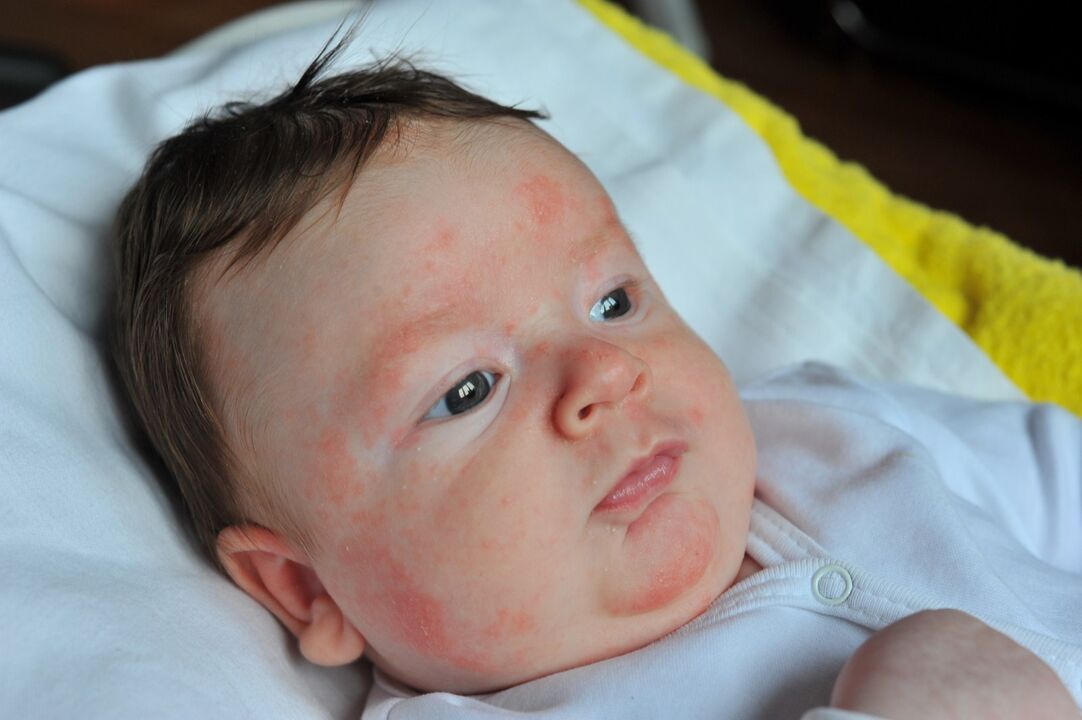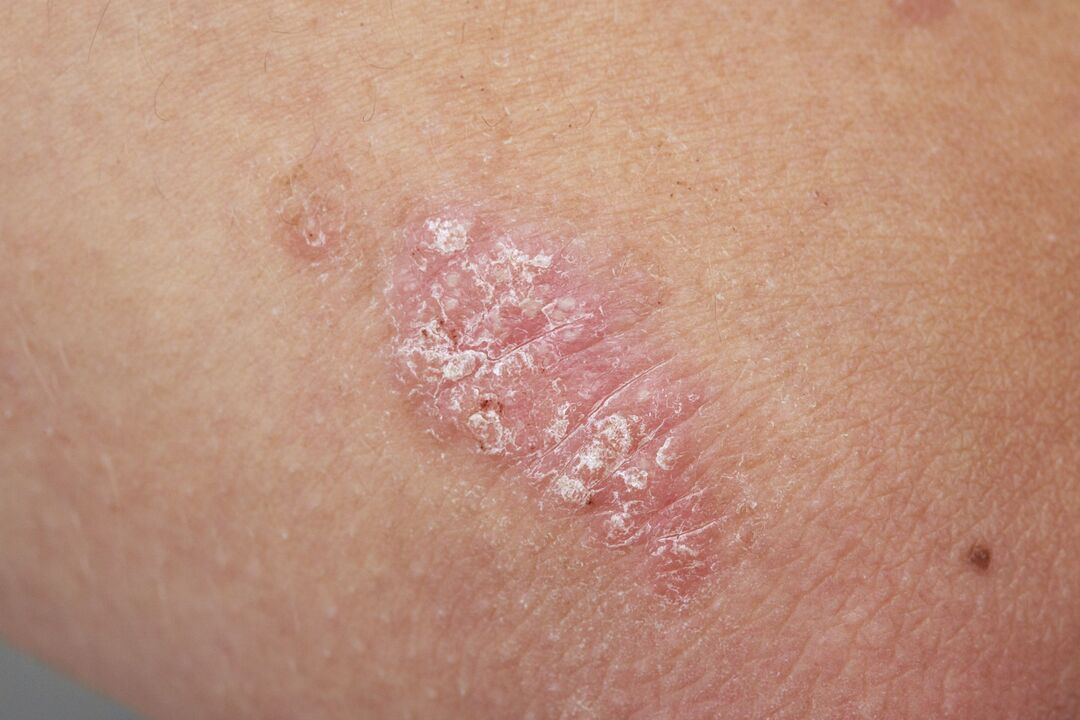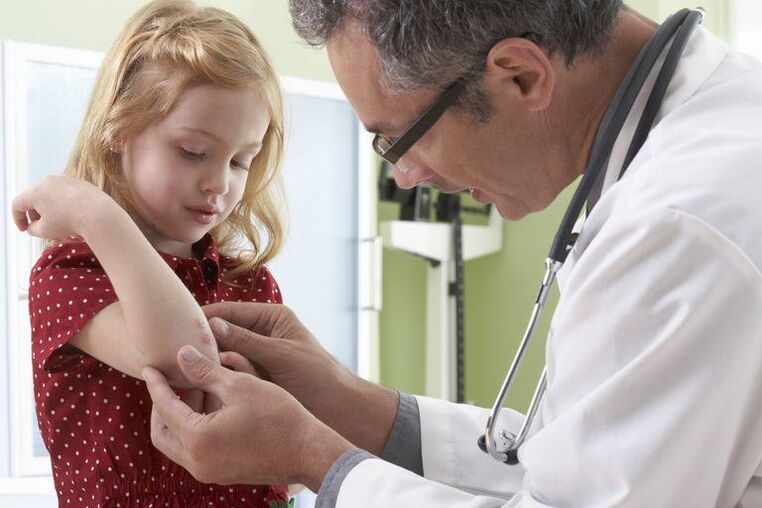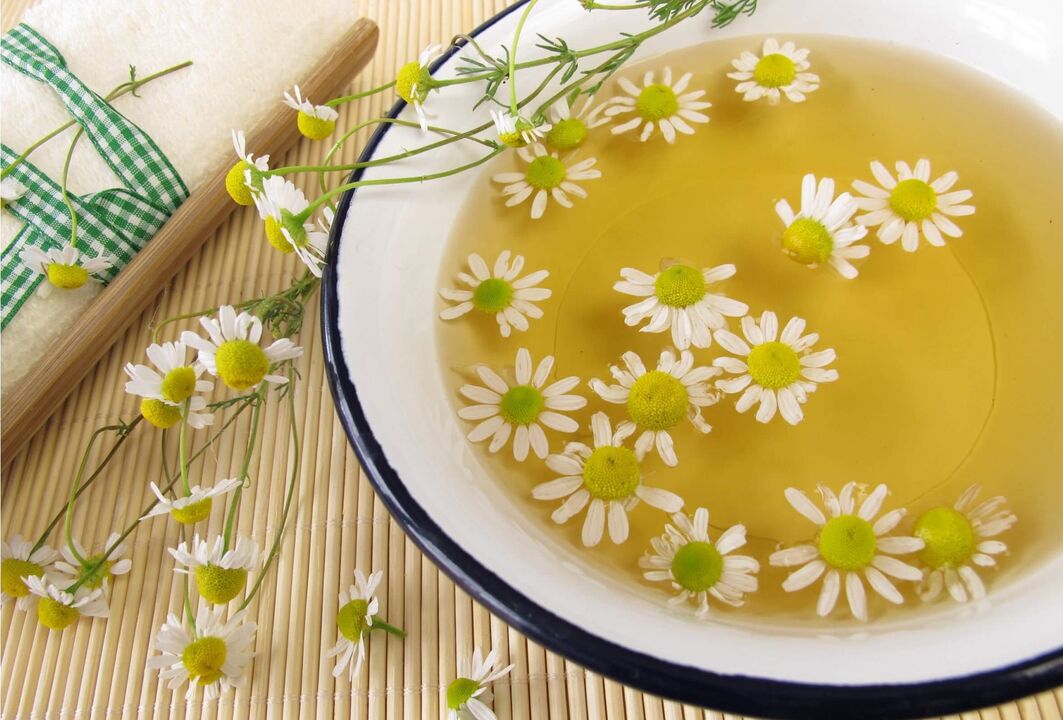Doctors often need to diagnose psoriasis in children. This disease is one of the dominant chronic forms of childhood dermatitis. Signs of psoriasis can appear in children of any age. This pathology is frequently observed even in newborn infants.
Reason for appearing
Modern medicine is still unable to say exactly what affects the emergence and development of diseases. In the course of extensive research, experts have discovered that genetics plays an important role in this process. The following statistics were published:
- If one of the parents of the baby has psoriasis, there is a 50% chance that he will experience pain;
- If both parents have psoriasis, the probability increases to 70%.
The development of clinical symptoms of psoriasis in children is usually observed as a result of the child's physical exposure to:
- Psycho-emotional experience;
- body overload;
- infectious diseases;
- Allergic reaction.
Any adverse effect on the baby's fragile body can lead to this unpleasant consequence.
In a healthy person, dead cells that have passed their life cycle are naturally shed. If this process fails, skin particles begin to build up on its surface. As a result, special plaques are formed, which are able to enlarge and grow.
symptom
Psoriasis in children is identified by the characteristic symptoms of the disease. First, redness appears on the skin. It's in the folded area. Afterwards, the swelling of the epidermal layers and their exfoliation are observed. Usually, in children over the age of 2, they begin to shed strongly.
If psoriasis develops on the nails, the child will have small depressions in the nail plastic. One-third of babies with the disease experience similar physical impairments.

Psoriatic skin lesions observed on the head can cause severe redness. The plaques cover the forehead, cheeks, ears and eyelids. Skin peeling on the hairline is not excluded. If the disease progresses, gray scales develop under the hair. However, their loss was not observed. There are no such painful symptoms even in severe psoriasis.
In some children, psoriasis is detected on the mucous membranes of the mouth and tongue. This area is full of unpleasant spots that change in color and shape from time to time.
Skin patches always cause pain and severe itching. The rash can peel and break, causing ulcers and bleeding. This is a very dangerous situation because the infection can easily penetrate the cracks. After about 10 years, the symptoms of psoriasis in children start to look like signs of the disease in adults.
progression stage
In the standard course, a skin disease always goes through several stages of its development:
initial
It is characterized by a primary rash on the skin. Too often, adults mistake it for a common allergy or predisposition. In children under two years of age, the initial stage is accompanied by redness. The rash is easy to identify because it looks like a limited papule with a red hue. Within a few days, the rash becomes smooth. then gradually covered by grey scales;
progress
During this stage, the child develops a rapidly growing rash on the head and other parts of the body. They started to merge into one. Peeling was only observed in the center of the rash. Meanwhile, the borderlands are only growing. The skin gradually becomes inflamed and begins to itch. At this stage, the disease usually lasts from 2 weeks to several months;
stationary
Psoriasis in children continues to develop. His symptoms became more pronounced. Old patches stop growing. They are replaced by new rashes. Exfoliation intensifies. The duration of this phase is not represented by a time frame;
regressive
The signs of peeling partially disappear on the child. Plaques become smaller. They leave visible scars. With successful results, areas begin to develop hyperpigmentation that differs from their natural skin tone. Over time, they will disappear completely.
The duration of separate developmental stages of psoriasis in young children depends on how the disease develops and whether steps are taken to eliminate it.
type
There can be different types of psoriasis in children. On the subject photo, you can see the characteristics of each person's skin. Diseases are classified according to symptoms and localization of scales.
movie psoriasis
It is diagnosed in children who are not yet 1 year old. The rash usually affects the buttocks area. They result from constant skin contact with the baby's natural secretions and rubbing with diapers. The skin in this area is highly irritated, so doctors can hardly recognize psoriasis. Some parents don't even pay attention to the problem because they see the rash as common dermatitis.
Plaque Psoriasis
This is a common form of skin pathology. It is characterized by red spots that cover different parts of the child's body. At first they were small. These spots grow very fast. After they start to peel.
Seen from above, the rash is covered with a scaly layer that easily separates from the skin. Most often, they appear on the head, knees, and elbows.

Guttate Psoriasis
With this form of the disease, the child's body is covered with many rashes that take the form of droplets that resemble droplets. They are small and round. The pimples that form are located above the surface of the skin. They are characterized by severe peeling. Rashes can happen on absolutely any part of the body. In the absence of favorable factors for further development, psoriasis stops developing and disappears. In other cases, it develops into another form of the disease.
generalized pustular psoriasis
This form of psoriasis in children occurs suddenly. In a short period of time, it can affect large areas of the skin. They become very inflamed and covered in painful ulcers. The child suffers from constant pain in the area where the rash builds up.
This form of the disease is considered one of the most dangerous because it can lead to serious complications. This type of psoriasis can even cause damage to internal organs. The kidneys and heart are most affected by its negative effects.
Pustular psoriasis
It was diagnosed in children already 7 years old. In young children, this form of psoriasis has only been observed in rare cases.
The signs of psoriasis in children are very obvious. The pustular form of the disease is accompanied by swelling of the skin, and the skin is covered with small bubbles filled with non-infectious fluid. Another symptom of this type of psoriasis is inflammation of the lymph nodes.
Erythrodermic psoriasis
A rather dangerous and unpredictable form of psoriasis. It leads to a violation of the body's thermoregulation. The disease is identified by severe skin peeling and inflammation. Children are often tormented by itching and pain in the affected area. Over time, large areas of the epidermis begin to peel off. If the child is very young, then he may not survive the situation.
flexural psoriasis
From the name of the disease category it is understood that it affects the curved areas of the body. The rash usually occurs on the groin, genitals, and inner thighs. The skin is covered with red spots. They are smooth and do not flake.

Arthropathic psoriasis
This form of the disease affects the joints. Psoriasis pathology is identified by symptoms such as muscle stiffness, swelling, and swollen fingers. The joints start to hurt. In some cases, children develop conjunctivitis.
Most types of psoriasis are clinically very similar. Therefore, it is difficult to determine which disease a child has without consulting a doctor.
diagnosis
Seek immediate medical attention if your child develops a painful rash on the head or other parts of the body. When such symptoms occur, a dermatologist should be consulted. After a thorough examination of the patient and hearing his complaints, he will be able to make a diagnosis. A doctor will prescribe a histology test for the baby. To do this, a small sample of affected tissue will be taken from him. The results of the laboratory analysis will help the dermatologist make the correct diagnosis for the child. After that, he will receive treatment, which should relieve the painful condition.

treat
Treatment can be done at home or in the hospital, and it works to get rid of the signs of psoriasis in young children. The latter option is the best option if the patient is in the progressive stage of the disease.
It is necessary to learn how to treat psoriasis from a dermatologist who monitors your child's condition. He can provide a course based on the following drugs:
- Sedation and desensitization. You need to take calcium gluconate solution (5%) or calcium chloride solution (10%). This must be done 3 times a day. Take this medicine in the form of a teaspoon or tablespoon as recommended by your doctor. Intramuscular injection based on calcium gluconate (10%) solution is also prescribed. At least 10 processes are required;
- Antihistamines. They help get rid of severe itching. These drugs are taken in courses of up to 10 days each;
- vitamins. Typically, children take ascorbic acid, which must be taken 3 times a day, up to a maximum of 0. 1 g. Pyridoxine solution (up to 5%) is also used. They gave him injections. Intramuscular vitamin B12 introduction is shown. Oral administration of vitamin B15 and potassium orotate;
- Pyrogen. They are necessary to stimulate the body's defense mechanisms. With their help, it is possible to normalize vascular permeability and eliminate mitotic activity in the skin layer. For best results, approximately 8 injection sessions are required.
Traditional medicine offers active treatment sessions for children diagnosed with psoriasis. With such a diagnosis, UV radiation and a hot bath can help. Also, don't ignore topical preparations. Healing ointments and creams help soften the skin and reduce itching.
folk remedies
Individual medicines that help cure psoriasis may be contraindicated in children. Their parents and doctors must then choose safer treatments for younger patients, which will have positive outcomes. In this case, traditional treatments are helpful. You can relieve your baby's condition by:
- German Chamomile Lotion. They must be applied where a large number of painful rashes accumulate;
- Salt bath. They have a healing effect and disinfect wounds formed on the skin;
- Hot tea with herbs added. This drink is best made with dandelion root, burdock, grapes, sarsaparilla and pear;
- Activated carbon. It removes harmful substances from the body, thereby preventing new plaques from forming on the head, legs, arms and other parts of the body. Drug-based solutions should be taken 2 hours before meals. This course of treatment should last at least 40 days;
- Celandine tincture. It is taken orally. The tool is made with 1 cup of water and 1 tablespoon. l. Chopped plants. The drink should be infused for about 40 minutes before drinking. Take folk medicine 2 times a day.

Children with psoriasis must follow a special diet. His diet should include vegetables and juices, fresh herbs, fish and turkey.
It is strongly recommended to give up animal products that are high in fat. Patients must adhere to an optimal drinking regimen. He should drink about 8 cups a day.
prevention
A large number of people infected with psoriasis lead completely normal lives. But many still worry about their appearance. This question is of particular concern to children. As a result of this disorder, children may become depressed and shut themselves off. Therefore, parents should do whatever they can to protect their beloved children from this unpleasant disease.
Preventing psoriasis rashes from developing on the skin can help maintain an appropriate lifestyle. It is necessary to provide children with proper rest, sleep and a balanced diet. He should avoid hypothermia and prolonged exposure to the sun. Also contraindicated is the use of quick-drying soaps and lotions.
Usually, psoriasis that manifests in young children is rarely serious. Thus, with the timely provision of medical care to the patient, he managed to quickly and permanently eliminate the signs of the pathological process. In order for the baby to recover, it should be completely protected from the factors that trigger the progression of psoriasis.























